- Why grow winter garlic
- Importance of rejuvenating planting material
- Growing Winter Garlic
- 1. Selecting the right garlic bulbs
- 2. Preparing the soil
- 3. Planting the garlic cloves
- 4. Watering and fertilizing
- 5. Mulching and weed control
- 6. Harvesting and storing
- Selecting the right variety
- Preparing the soil for planting
- 1. Clear the area
- 2. Test the soil
- 3. Add organic matter
- 4. Provide adequate drainage
- 5. Apply a balanced fertilizer
- 6. Final soil preparation
- Planting and caring for winter garlic
- Choosing the right variety
- Preparing the planting area
- Planting the garlic cloves
- Caring for winter garlic
- Harvesting winter garlic
- Rejuvenating Planting Material:
- 1. Sorting and selecting:
- 2. Soaking:
- 3. Pre-sprouting:
- 4. Using organic fertilizers:
- 5. Proper storage:
- 6. Rotating planting material:
- Harvesting garlic bulbs
- Step 1: Timing
- Step 2: Loosening the soil
- Step 3: Lifting the bulbs
- Step 4: Cleaning and curing
- Step 5: Trimming and storing
- Selecting and preparing cloves for planting
- 1. Choose healthy cloves
- 2. Use large cloves
- 3. Prepare the cloves
- 4. Polarize the cloves
- 5. Treat for fungal diseases
- Preserving Planting Material
- 1. Proper Harvesting
- 2. Sorting and Selecting
- 3. Storing Conditions
- 4. Recurring Inspections
- 5. Labeling and Organization
- 6. Pre-planting Treatments
- 7. Testing Viability
- 8. Rotating Planting Material
- “Question-Answer”
- Why is winter garlic considered to be rejuvenating and preserving planting material?
- What is the process of growing winter garlic?
- What are the benefits of growing winter garlic?
- Can I grow winter garlic indoors?
- What types of soil are best for growing winter garlic?
- When is the best time to harvest winter garlic?
- How do I store winter garlic for future planting?
- “Video” This ONE Tip Will DOUBLE The Size of Your Garlic Heads!
Growing garlic in winter can be a rewarding and cost-effective way to rejuvenate and preserve your planting material. While many gardeners plant garlic in spring or fall, growing it in winter can offer several advantages. Winter garlic has a longer growing season, which allows it to develop a stronger root system and produce larger, healthier bulbs. Additionally, garlic planted in winter is less prone to disease and pest infestation, as the cold temperatures help suppress these issues.
Before you start growing winter garlic, it’s important to select the right varieties. Some of the best choices for winter planting are hardneck garlic varieties, such as Rocambole, Porcelain, and Purple Stripe. These varieties are known for their strong flavor and ability to withstand colder temperatures. It’s also crucial to choose high-quality planting material, as the success of your winter garlic crop depends on the health and vigor of the cloves.
When it comes to planting winter garlic, timing is key. It’s recommended to plant garlic in late fall or early winter, as the cloves need a period of cold dormancy to break their dormancy and start growing. However, if you live in a region with mild winters, you can plant garlic as late as early spring. Before planting, prepare the soil by removing any weeds and adding organic matter, such as compost or well-rotted manure, to improve its fertility and drainage.
Once the soil is ready, it’s time to plant the garlic cloves. Dig a trench about 2-3 inches (5-7.5 cm) deep and place the cloves with the pointed end facing up. Space the cloves about 4-6 inches (10-15 cm) apart and cover them with soil. If you live in an area with heavy frost, you can also mulch the garlic bed with straw or leaves to provide extra insulation. Water the garlic regularly, especially during dry spells, but avoid overwatering to prevent rotting.
With proper care and attention, your winter garlic crop will thrive and provide you with a bountiful harvest in the summer. Remember to harvest the garlic when the tops start to dry out and turn brown. Allow the bulbs to cure in a cool, dry place for a few weeks before trimming the roots and tops and storing them in a well-ventilated area. By growing winter garlic, you can rejuvenate and preserve your planting material while enjoying the delicious flavor of homegrown garlic.
Why grow winter garlic
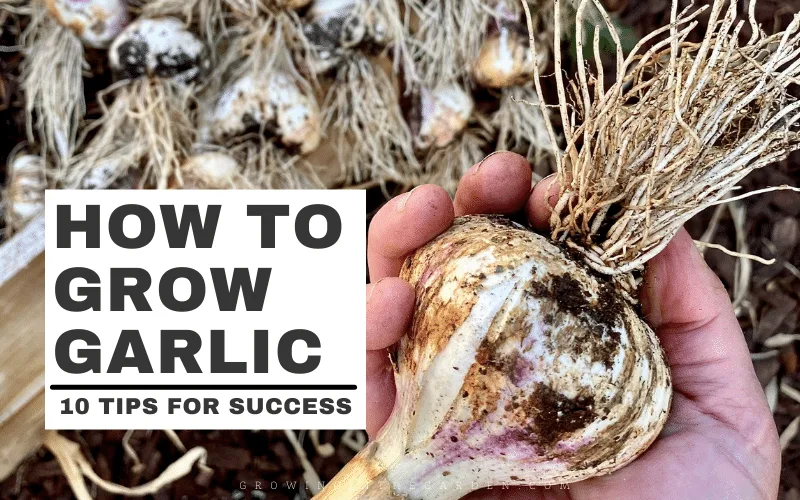
Growing winter garlic can be a rewarding and beneficial experience for both home gardeners and commercial farmers. There are several reasons why you should consider growing winter garlic:
- Taste and flavor: Winter garlic has a distinct and delicious flavor that is often described as rich, full-bodied, and even slightly sweet. It adds a wonderful taste to a wide range of dishes, from soups and stews to stir-fries and roasted vegetables.
- Health benefits: Garlic is well-known for its numerous health benefits. It is a good source of vitamins and minerals, such as vitamin C, vitamin B6, and manganese. Garlic is also rich in antioxidants and has antibacterial and antifungal properties.
- Easy to grow: Winter garlic is relatively easy to grow, even for beginner gardeners. It requires minimal maintenance and can tolerate a wide range of soil conditions. With proper care, you can enjoy a bountiful harvest of garlic bulbs in the summer.
- Pest and disease resistance: Garlic is known for its natural pest and disease resistance. It can repel common garden pests, such as aphids and snails, and it can also help prevent various fungal and bacterial diseases that can affect other plants in your garden.
- Long storage life: Winter garlic has a long shelf life and can be stored for several months under the right conditions. This means that you can enjoy the delicious taste and health benefits of garlic throughout the year, even during the winter months when fresh produce may be scarce.
In addition to these reasons, growing winter garlic can also be a fun and fulfilling gardening activity. It allows you to connect with nature, experiment with different growing techniques, and enjoy the satisfaction of harvesting your own homegrown garlic.
Whether you have a small backyard garden or a larger agricultural operation, growing winter garlic can be a worthwhile endeavor. It offers a variety of benefits, from its delicious taste and health benefits to its ease of cultivation and long storage life.
Importance of rejuvenating planting material
Rejuvenating planting material is a crucial step in the process of growing winter garlic. Rejuvenation ensures the health and vitality of the garlic bulbs, resulting in better yields and improved resistance to diseases and pests.
There are several reasons why rejuvenating planting material is important:
- Improves garlic quality: Rejuvenating the planting material helps remove any weak or diseased cloves, ensuring that only the healthiest bulbs are replanted. This improves the overall quality of the garlic crop.
- Increases yield: Healthy planting material leads to increased bulb size and overall yield. Rejuvenated bulbs have more energy stored in them, resulting in bigger and healthier garlic cloves.
- Enhances disease resistance: Rejuvenating planting material helps minimize the risk of diseases and pests. By removing any infected cloves, you can prevent the spread of diseases to the new crop, resulting in healthier garlic plants.
- Preserves garlic varieties: Rejuvenation allows you to preserve the desired characteristics of a specific garlic variety. By selecting the best cloves for replanting, you can maintain the unique flavor, aroma, and appearance of the garlic you are growing.
- Ensures long-term sustainability: Rejuvenating planting material is crucial for the long-term sustainability of garlic cultivation. By rejuvenating bulbs each year, you can maintain a healthy garlic population and avoid the gradual decline in quality that can occur if planting material is not rejuvenated.
In conclusion, rejuvenating planting material is essential for successful winter garlic cultivation. It helps improve garlic quality, increase yield, enhance disease resistance, preserve garlic varieties, and ensure long-term sustainability. By investing time and effort in rejuvenating your planting material, you can enjoy a bountiful and healthy garlic harvest year after year.
Growing Winter Garlic
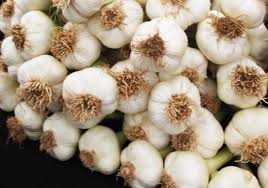
Winter garlic is a great addition to any garden, not only for its delicious taste but also for its numerous health benefits. It is rich in antioxidants, helps boost the immune system, and has antimicrobial properties. Growing winter garlic requires some preparation and care, but the results are definitely worth it. Here are some steps to get you started:
1. Selecting the right garlic bulbs
When choosing garlic bulbs for planting, make sure to select large, healthy bulbs with no signs of disease or damage. Look for bulbs with tight, firm cloves and avoid any that feel soft or sprouted. You can use store-bought garlic or purchase bulbs specifically for planting from a garden center or online.
2. Preparing the soil
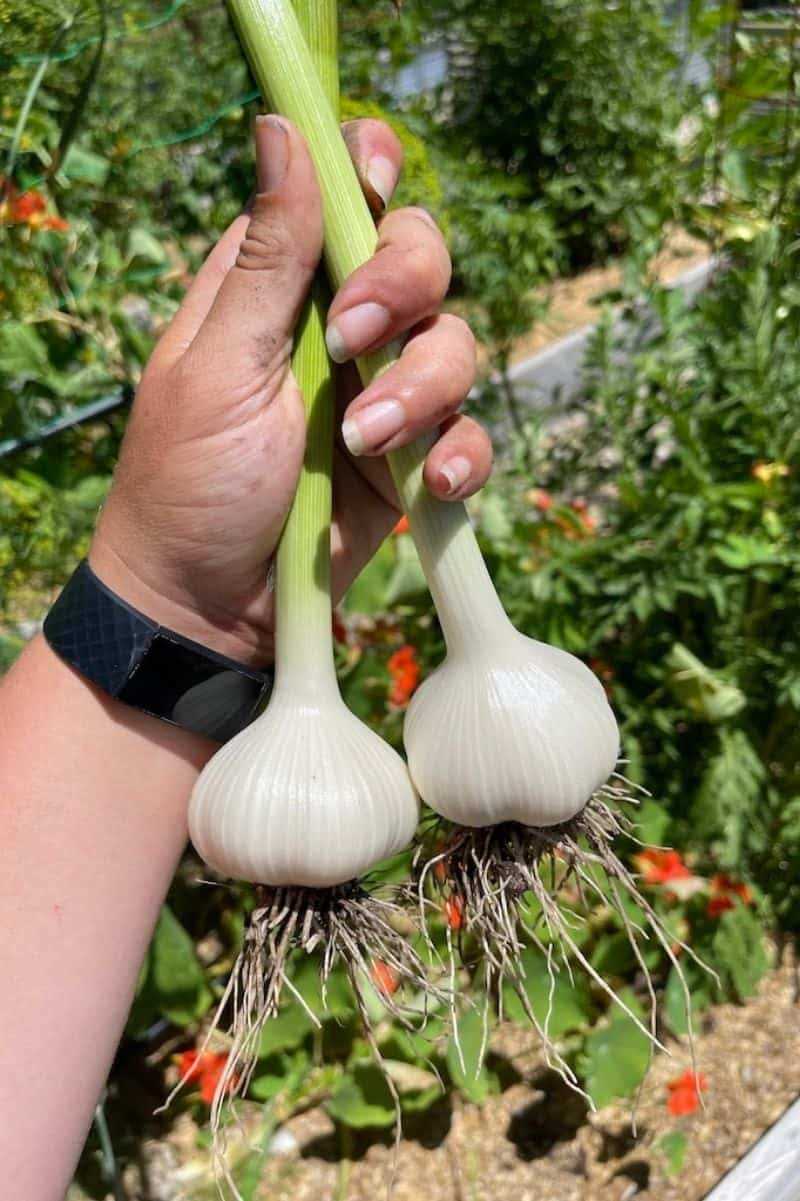
Garlic grows best in well-draining soil with a pH level between 6 and 7. Before planting, amend the soil with organic matter, such as compost or aged manure, to improve its structure and fertility. Remove any weeds or debris from the planting area and loosen the soil to a depth of about 6-8 inches.
3. Planting the garlic cloves

Break the garlic bulbs into individual cloves, keeping the papery skin intact. Plant the cloves with the pointed end facing up, about 2-4 inches deep and 6-8 inches apart. Space the rows about 12-18 inches apart to allow for proper air circulation. Cover the cloves with soil and gently firm it down.
4. Watering and fertilizing
Garlic needs consistent moisture to grow properly, especially during the initial stages. Water the garlic regularly, keeping the soil evenly moist but not waterlogged. Avoid overhead watering, as it can increase the risk of diseases. Apply a balanced fertilizer or organic fertilizer in early spring and again a month after planting to provide the necessary nutrients.
5. Mulching and weed control
Apply a layer of organic mulch, such as straw or chopped leaves, around the garlic plants to suppress weed growth, conserve soil moisture, and regulate soil temperature. Avoid using thick layers of mulch, as it can create a favorable environment for pests and diseases.
6. Harvesting and storing
Winter garlic is typically ready for harvest in late spring or early summer when the leaves turn yellow and start to wither. Carefully loosen the soil around the bulbs and gently lift them out of the ground. Allow the garlic to dry in a well-ventilated area for a couple of weeks. Once dry, trim the roots and remove the outer layers of skin. Store the garlic in a cool, dry place with good air circulation.
By following these steps, you can enjoy a bountiful harvest of winter garlic. Remember to save some of the best bulbs for replanting next season and continue the cycle of growing your own garlic year after year.
Selecting the right variety
When it comes to growing winter garlic, selecting the right variety is crucial. There are many different varieties of garlic available, each with its own characteristics and optimal growing conditions. Here are some factors to consider when choosing a variety:
- Hardiness: Not all garlic varieties can withstand the cold temperatures of winter. Make sure to select a variety that is suitable for your climate and can withstand frost and freezing temperatures.
- Flavor: Garlic varieties vary in taste, ranging from mild and sweet to strong and pungent. Consider your preferences and the culinary applications when selecting a variety.
- Size and bulb shape: Garlic bulbs come in different sizes and shapes. Some varieties produce larger bulbs, while others have a more elongated or round shape. Choose a variety that suits your culinary needs and preferences.
- Storage life: Some garlic varieties have a longer storage life than others. If you want to store your harvested garlic for an extended period, choose a variety that is known for its good storage qualities.
- Growing conditions: Different garlic varieties thrive in different growing conditions. Consider factors such as soil type, moisture levels, and sunlight requirements when selecting a variety that will grow well in your specific environment.
It’s important to research and choose a variety of winter garlic that suits your needs and growing conditions. This will ensure a successful and productive harvest of flavorful garlic bulbs.
Preparing the soil for planting
Before planting winter garlic, it is essential to prepare the soil to provide a favorable environment for the growth and development of the plants. Here are some steps to follow:
1. Clear the area
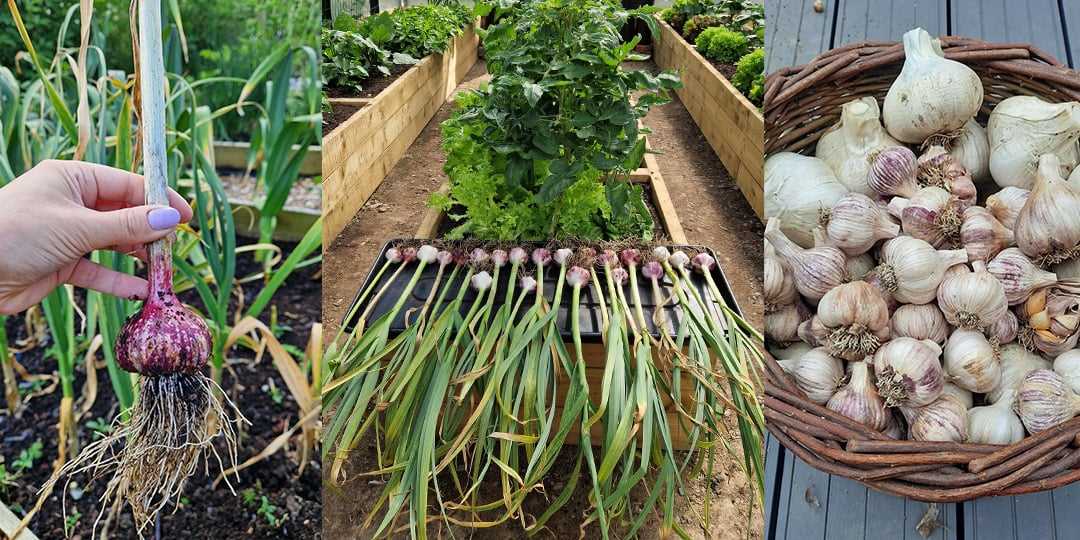
Start by removing any weeds or debris from the planting area. This will help reduce competition for nutrients and space, allowing the winter garlic to grow more effectively. Use a hoe or a garden rake to clear the area thoroughly.
2. Test the soil
Conduct a soil test to determine the pH level and nutrient content of the soil. Winter garlic prefers a slightly acidic soil in the range of pH 6-7. If the pH level is too high or too low, it may affect the plant’s growth and development. Based on the soil test results, adjust the pH level by adding lime or sulfur accordingly.
3. Add organic matter
To improve the soil’s structure and nutrient content, incorporate organic matter such as compost or well-rotted manure. Spread a layer of organic matter over the planting area and use a garden fork or a tiller to work it into the soil. This will enhance the soil’s fertility and drainage capabilities, allowing the winter garlic to establish strong roots.
4. Provide adequate drainage
Winter garlic prefers well-drained soil to prevent waterlogging, which can lead to root rot and other diseases. If the soil in the planting area has poor drainage, consider amending it by adding sand or perlite to improve its structure. Alternatively, raised beds can be created to ensure proper water drainage.
5. Apply a balanced fertilizer
Prior to planting winter garlic, it is recommended to apply a balanced fertilizer that is rich in nitrogen, phosphorus, and potassium. This will provide the plants with essential nutrients for healthy growth. Follow the manufacturer’s instructions for the correct application rate.
6. Final soil preparation
Before planting, make sure to rake the soil surface to create a smooth bed. Remove any large clumps or stones that could interfere with bulb development. The surface should be level and free of any potential obstructions.
By following these soil preparation steps, you can create a favorable environment for winter garlic to thrive and produce a bountiful harvest.
Planting and caring for winter garlic
Planting winter garlic is a simple and rewarding process that can be done in a few easy steps. By following these guidelines, you can ensure a successful growing season and a bountiful harvest of garlic bulbs.
Choosing the right variety
When selecting winter garlic to plant, it is important to choose a variety that is well-suited for growing in your region. Different varieties have different requirements for temperature, day length, and soil type. Consult with a local horticulturist or gardening expert to determine which varieties are best for your area.
Preparing the planting area
Garlic prefers well-drained, loose soil with a pH level between 6.0 and 7.0. Begin by clearing the planting area of any weeds or debris. Dig the soil to a depth of 8-10 inches and remove any rocks or large clumps. Incorporate organic matter, such as compost or well-rotted manure, to improve soil fertility and structure.
Planting the garlic cloves
Separate the cloves from the garlic bulb just before planting. Choose the largest and healthiest cloves for planting, as these will produce the largest bulbs. Plant the cloves 2-4 inches deep and 4-6 inches apart, with the pointed end facing up. Cover the cloves with soil and lightly firm the soil around them.
Caring for winter garlic
Water the garlic immediately after planting and continue to provide regular irrigation throughout the growing season. Garlic requires consistent moisture to develop healthy bulbs. However, be careful not to overwater, as excessive moisture can lead to rot. Mulching the planting area with straw or shredded leaves can help retain moisture and suppress weeds.
Fertilize the garlic plants with a balanced organic fertilizer, following the manufacturer’s instructions. Apply the fertilizer in early spring and late summer to provide the necessary nutrients for optimal growth.
Monitor the garlic plants for pests and diseases, such as aphids, fungal infections, or rust. Remove any infected or infested plants to prevent the spread of pests or diseases. Proper spacing and good ventilation can help reduce the risk of fungal infections.
Harvesting winter garlic
Winter garlic is usually ready to harvest in late spring or early summer, depending on the variety and growing conditions. The plants will send up flowering stalks called scapes. Snip off the scapes when they curl for a milder flavor in the bulbs. When the leaves start to turn yellow and dry out, it is time to harvest the garlic. Gently dig up the bulbs with a garden fork, being careful not to damage them. Allow the bulbs to dry in a warm, well-ventilated area for several weeks before storing or using.
By following these planting and care guidelines, you can enjoy a successful winter garlic harvest and the delicious flavor of homegrown garlic in your meals.
Rejuvenating Planting Material:
One of the most important steps in growing winter garlic is rejuvenating the planting material. Rejuvenation is essential to ensure that the garlic bulbs have enough energy to produce healthy plants and a bountiful harvest. Here are some methods you can use to rejuvenate your planting material:
1. Sorting and selecting:
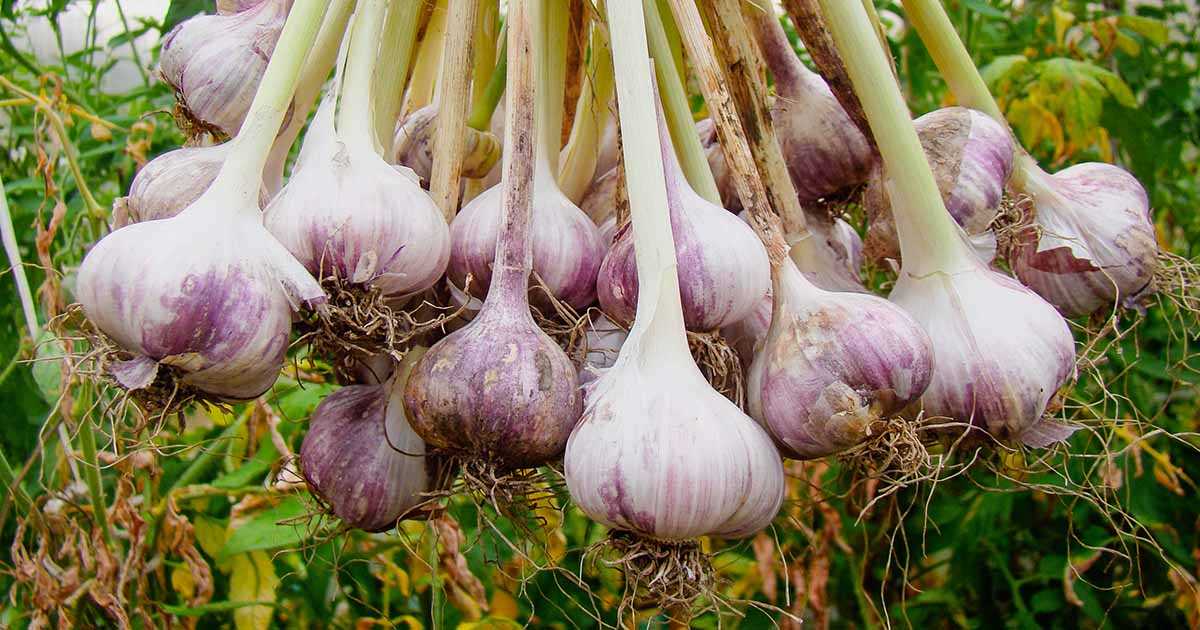
Start by sorting through the cloves and selecting the largest and healthiest ones. Discard any cloves that are soft, damaged, or have signs of disease. Only use cloves that are firm, plump, and free from any blemishes.
2. Soaking:
Soaking the cloves in a solution can help to stimulate growth and eliminate any potential pathogens. You can use a solution of water and hydrogen peroxide, or a mild bleach solution. Soak the cloves for about 20 minutes, then rinse them thoroughly with clean water.
3. Pre-sprouting:
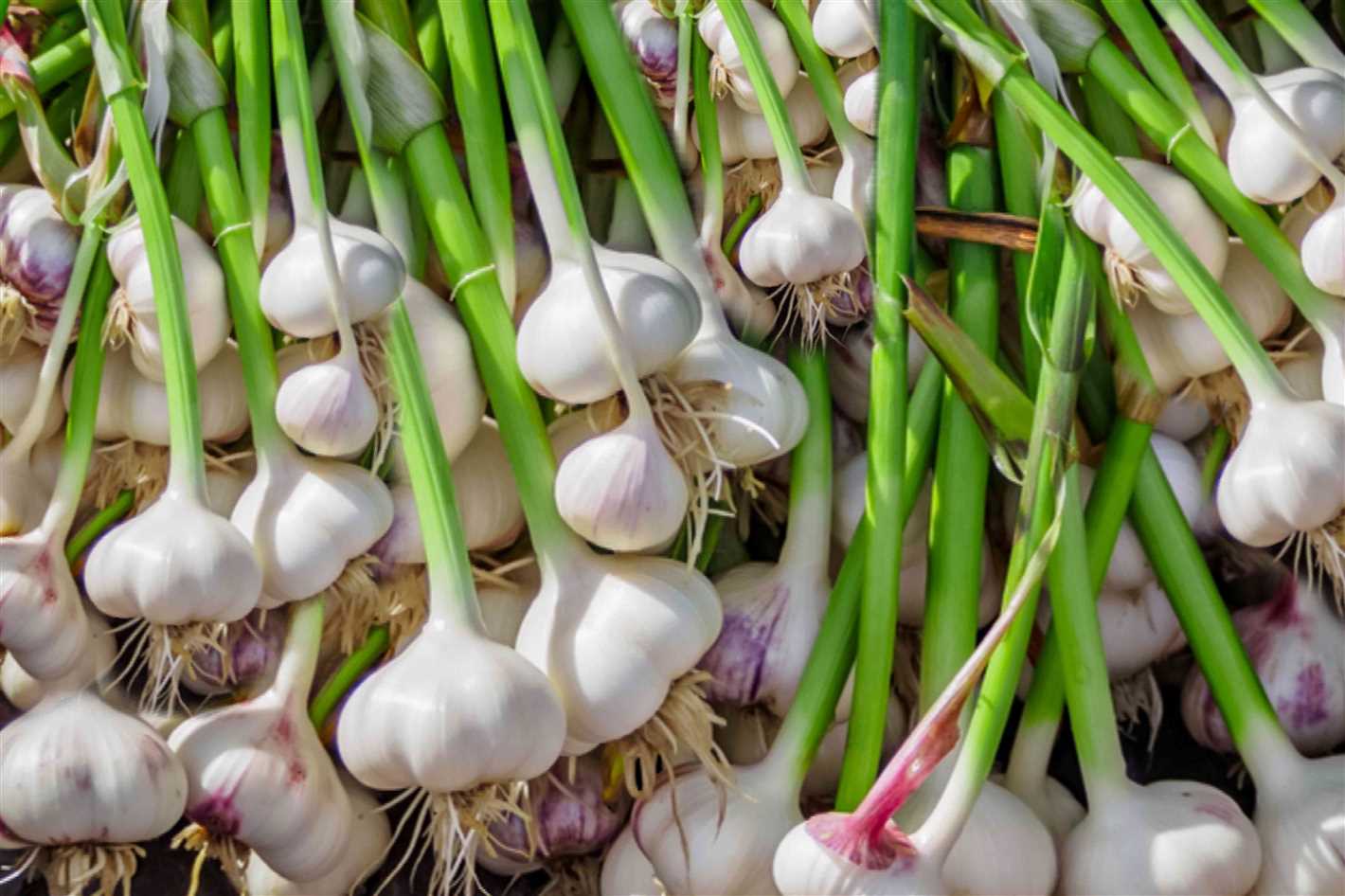
Pre-sprouting involves allowing the cloves to sprout before planting them in the ground. This can help to speed up the growth process and ensure that the cloves have enough energy to produce strong plants. To pre-sprout cloves, place them in a tray lined with damp paper towels or peat moss. Keep the tray in a cool, dark place and mist the cloves with water regularly. Once the cloves have sprouted, they are ready for planting.
4. Using organic fertilizers:
Applying organic fertilizers to the planting material can help to provide essential nutrients and energy for the garlic bulbs. You can use compost, well-rotted manure, or organic granular fertilizers. Mix the fertilizer into the soil or sprinkle it around the cloves before planting.
5. Proper storage:
Proper storage of the planting material is crucial for successful rejuvenation. Store the cloves in a cool, dry, and well-ventilated area to prevent rotting or molding. Avoid storing them in plastic bags or containers that can trap moisture.
6. Rotating planting material:
To ensure the long-term health and productivity of your garlic crop, it’s important to rotate the planting material every couple of years. This means sourcing fresh cloves from a different location or growing your own from a previous year’s crop. Avoid planting garlic in the same spot for consecutive years to reduce the risk of disease and nutrient depletion.
By following these rejuvenation methods, you can ensure that your winter garlic planting material is healthy, vigorous, and ready to produce a successful crop.
Harvesting garlic bulbs
Harvesting garlic bulbs is an exciting and rewarding process that marks the end of the growing season. It is essential to harvest the bulbs at the right time to ensure they are fully matured and have developed their maximum flavor and storage potential. Here are the steps to follow when harvesting garlic bulbs:
Step 1: Timing
Garlic bulbs are typically ready to be harvested when the lower leaves start to turn yellow or brown, usually in late summer or early fall, depending on the variety and growing conditions. It’s essential to monitor your garlic plants closely and not to wait too long, as overripe bulbs may begin to split and lose their taste.
Step 2: Loosening the soil
Before harvesting, gently loosen the soil around each garlic plant using a garden fork or a shovel. Be careful not to damage the bulbs during this process.
Step 3: Lifting the bulbs
Once the soil is loosened, grasp the stem of each garlic plant firmly near the base and slowly lift it out of the ground. Avoid pulling the garlic plants by their leaves, as this can damage the bulbs.
Step 4: Cleaning and curing
After lifting the bulbs, remove any excess soil clinging to them. Do not wash the garlic bulbs, as this can introduce moisture, which could lead to unwanted rot during the curing process. Instead, gently brush off the loose soil.
Next, arrange the garlic bulbs in a single layer on a drying rack or a well-ventilated area such as a porch or a garage. Keep the bulbs out of direct sunlight to prevent them from overheating. Allow the bulbs to cure for about 2-3 weeks, or until the outer skins become papery and dry to the touch.
Step 5: Trimming and storing
After curing, trim the roots and cut off the stems about an inch above the bulb. Avoid cutting too close to the bulb to prevent any potential damage or risk of spoilage.
Store the harvested garlic bulbs in a cool and dry location with good air circulation. You can store the bulbs in mesh bags or hang them in braids for easy access and a decorative touch. Properly cured and stored garlic bulbs can last for several months without spoiling.
Now you are ready to enjoy the fruits of your labor and savor the unique flavors of your homegrown garlic bulbs!
Selecting and preparing cloves for planting
Choosing the right cloves for planting is essential to ensure a successful garlic harvest. Here are some tips to help you select and prepare cloves for planting:
1. Choose healthy cloves
Look for cloves that are firm, plump, and free from any signs of rot or disease. Avoid cloves that are small, discolored, or shriveled, as these may not produce strong, healthy plants.
2. Use large cloves
Using large cloves will give you bigger garlic bulbs at harvest time. Select the largest cloves from each garlic bulb to plant. These cloves have more energy stored and are more likely to produce large, healthy plants.
3. Prepare the cloves
Before planting, gently separate the garlic bulb into individual cloves. Be careful not to damage the cloves or remove the papery skin. Leave the skin intact as it helps protect the clove during planting and growth.
4. Polarize the cloves
Polarizing the cloves involves sorting them by size. Separate the largest cloves from the smaller ones and plant them separately. This allows the larger cloves to develop into bigger bulbs without competition from smaller cloves.
5. Treat for fungal diseases
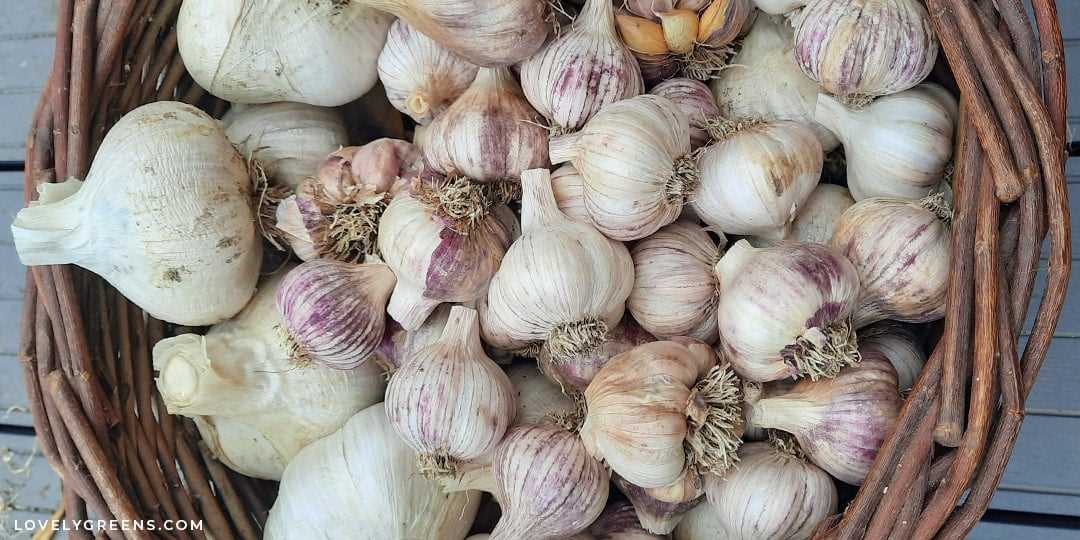
To prevent fungal diseases, you can soak the cloves in a solution of 1 part bleach to 10 parts water for 10 minutes before planting. This helps kill any fungal spores that may be present on the cloves.
By following these steps, you can ensure that you have selected and prepared the best cloves for planting. This will increase your chances of a successful and bountiful garlic harvest.
Preserving Planting Material
Preserving planting material is crucial for successful winter garlic cultivation. Here are some methods to ensure the preservation of your planting material:
1. Proper Harvesting
When harvesting garlic bulbs for future planting, it is essential to follow proper techniques. This includes pulling the bulbs out of the ground gently, avoiding damage to the cloves. Carefully clean off excess soil and let the bulbs dry for a few weeks in a well-ventilated area.
2. Sorting and Selecting
After the garlic bulbs have dried, sort and select the best quality cloves for planting. Discard any bulbs with visible signs of disease or damage. Choose the largest and healthiest cloves, as they will have the greatest potential for successful growth.
3. Storing Conditions
Stored planting material should be kept in a cool, dry, and well-ventilated place. Avoid exposing the cloves to direct sunlight, as it can cause drying and damage. The ideal storage temperature for garlic cloves is around 50°F (10°C).
4. Recurring Inspections
Regularly inspect the stored cloves for any signs of rot, mold, or sprouting. Remove any affected cloves immediately to prevent the spread of diseases or pests. It is crucial to maintain the integrity of the stored planting material until it is time for planting.
5. Labeling and Organization
Label each batch of stored cloves with the variety and date of harvest. This will help keep track of the age and quality of the planting material. Proper organization will ensure that you use the oldest cloves first, reducing the chance of spoilage.
6. Pre-planting Treatments
Prior to planting, consider treating the cloves with a fungicide to prevent diseases. This can help protect the cloves and increase the chances of successful growth. Follow the instructions provided with the fungicide carefully.
7. Testing Viability
Before planting the preserved cloves, it is advisable to test their viability by performing a germination test. Plant a small sample of cloves and observe their sprouting rate. If the sprouting rate is low, it may be necessary to source new planting material.
8. Rotating Planting Material
To maintain the health and vigor of your garlic crop, it is best to rotate planting material. Avoid using cloves from the same batch or variety for consecutive seasons. This will help prevent the buildup of diseases, pests, and potential deterioration of the planting material.
Following these guidelines will help ensure the preservation and successful use of planting material for winter garlic cultivation.
“Question-Answer”
Why is winter garlic considered to be rejuvenating and preserving planting material?
Winter garlic is considered rejuvenating and preserving planting material because it can regenerate and produce a new crop year after year without the need for replanting.
What is the process of growing winter garlic?
The process of growing winter garlic involves selecting healthy cloves, preparing the soil, planting the cloves in the fall, and providing proper care throughout the winter and spring.
What are the benefits of growing winter garlic?
There are several benefits of growing winter garlic, including its ability to improve soil health, its resistance to pests and diseases, and its potential to produce larger bulbs and better flavor.
Can I grow winter garlic indoors?
While it is possible to grow winter garlic indoors, it is generally recommended to grow it outdoors in a garden or raised bed where it can receive full sun and proper air circulation.
What types of soil are best for growing winter garlic?
Winter garlic prefers well-drained soil that is rich in organic matter. Sandy loam or loamy soil with a pH level between 6.0 and 7.5 is ideal for optimum growth and development.
When is the best time to harvest winter garlic?
The best time to harvest winter garlic is when the lower leaves turn yellow and the tops begin to dry out. This usually occurs in late spring or early summer, depending on the specific variety and growing conditions.
How do I store winter garlic for future planting?
To store winter garlic for future planting, it is important to cure the bulbs first. This involves hanging them in a dry, well-ventilated area for several weeks until the outer skins become dry and papery. After curing, the bulbs can be stored in a cool, dark place with low humidity until they are ready to be planted again.







